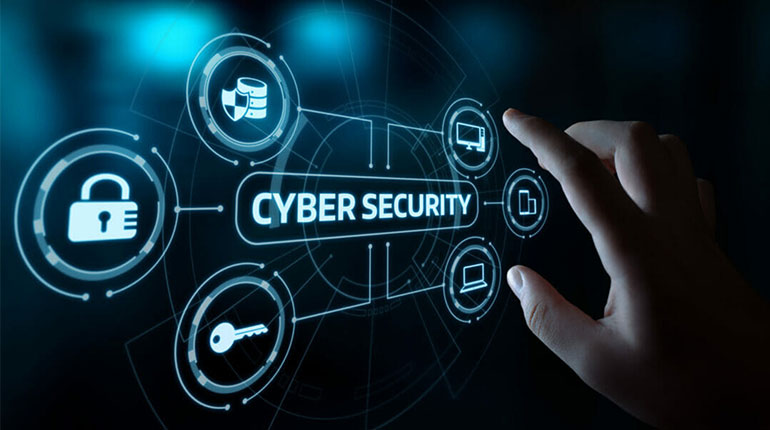Cybersecurity is not just the responsibility of IT departments, but a company-wide commitment. As cyber threats become more complex, the human element continues to be one of the weakest points in organizational security. According to Verizon’s 2024 Data Breach Investigations Report, 74% of data breaches involve human factors. These include errors, misuse, and social engineering attacks like phishing.
The answer? A cybersecurity-aware culture that encourages staff to act as the first line of defense. In this blog, we’ll share practical strategies for creating a cybersecurity-conscious workplace culture. You’ll learn how to help employees recognize threats, use strong passwords, and practice safe online habits.
How to Build Habits That Protect Your Business
When a culture prioritizes security, cybersecurity values become ingrained in daily decision-making. These values are not just about compliance; it is about mindset. With the right training, employees can stop attacks by questioning suspicious emails and links.
Establishing this culture lowers the risk of breaches, increases consumer trust, and protects businesses from costly mishaps. According to IBM’s 2023 Cost of a Data Breach Report, the average breach costs $4.45 million. Even more concerning, that figure continues to rise each year.
Phishing Awareness: Develop the Ability to Spot the Bait
Phishing is still one of the most popular and successful attack techniques. Consequently, workers need training to recognize phishing attempts. Common red flags include spoofed email addresses, suspicious links, and messages that use urgency or threats to provoke action.
Advice for training in phishing:
- Emulate actual attacks: Test how staff react to dubious emails by using phishing simulation tools.
- Give actual examples: Teach employees how to dissect phishing emails. Warning signs include spelling errors, “urgent action required” language, and sender addresses that don’t match the organization.
- Promote the “stop and think” strategy: Instruct employees to double-check any unexpected requests. This is especially important for requests involving financial transfers or login information.
- Establish a system for reporting: Make it easy for staff to report suspicious activity to IT or security.
According to Proofpoint’s 2024 Human Factor Report, over 90% of cyberattacks begin with phishing. This makes awareness training critical.
Password Hygiene: Fortifying Electronic Front Doors
Reused or weak passwords continue to be major weaknesses. A 2024 NordPass study revealed that “123456” and “password” are still the most used passwords. This clearly shows a widespread lack of awareness around secure password practices.
Tips for encouraging the use of strong passwords:
- Enforce length and complexity: Require passwords with at least 12 characters. Also use uppercase, lowercase, numbers, and symbols.
- Discourage reuse: Explain to staff members why it is riskier to use the same password for several accounts.
- Encourage the use of password managers: Programs that can create and safely store complicated passwords include Bitwarden, LastPass, and 1Password.
- Enable multi-factor authentication (MFA): Make MFA mandatory for all systems, especially for sensitive accounts.
Training suggestion: Organize a “Password Strength Day” at your workplace. Give employees the chance to check how secure their passwords are and learn tips for creating stronger ones.
Best Security Practices: Making Cyber Hygiene Routine
A thorough training program should cover a wide range of cyber hygiene practices, not just passwords and phishing.
Key areas for training:
- Device security: Teach employees to avoid public Wi-Fi, lock devices when unattended, and install updates promptly.
- Secure file sharing: Explain the dangers of sharing files through unapproved cloud platforms or personal emails.
- Security for remote work: Give instructions on how to use VPNs, protect home networks, and avoid shoulder surfing.
- Incident reporting: Reinforce the importance of reporting suspicious activity quickly and without fear of punishment.
Gamify it: To increase participation and engagement, think about transforming cybersecurity training into a test, contest, or challenge with rewards.
Advice for Increasing the Retention of Cybersecurity Training
- Making it an ongoing habit: Cybersecurity training is not a “one and done” process. Provide brief, frequent updates, particularly when new dangers arise.
- Role-specific: Risks vary depending on the role. Create specialized training for executives, HR, and finance departments.
- Lead from the top: Managers and executives should set an example of safe conduct. Leadership sets the culture.
- Measure and adapt: Monitor how many employees complete cybersecurity training. Use the results of simulated phishing tests to highlight areas that need improvement.
Conclusion: Cybersecurity Is Everyone’s Responsibility
Everyone is accountable for cybersecurity. Ongoing, hands-on training reduces risk, empowers employees, and builds a security-first culture. Employees are your strongest defense when they understand the “why” behind policies and can spot threats early. Creating a culture that prioritizes security is not only wise but also necessary. Learn more about how SMS Datacenter’s cybersecurity services can help with training employees. Contact us today at [email protected] or 949-223-9220.

